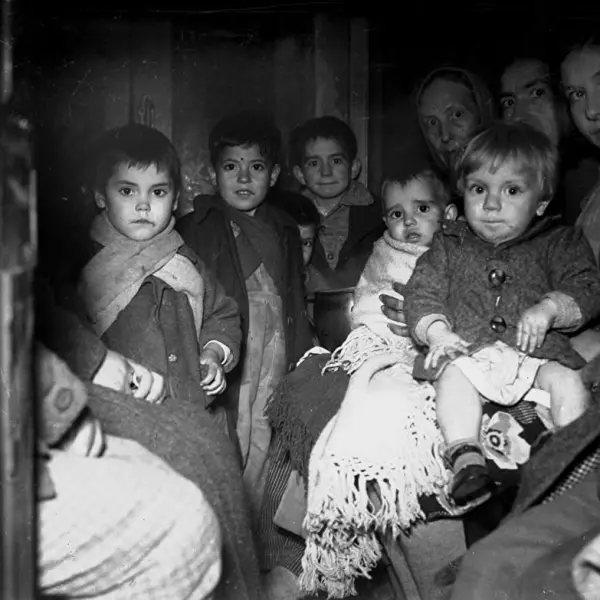First Helicopter Flight
Paul Cornu was a French engineer and bicycle maker who is widely recognized for achieving the first manned free flight in a helicopter on November 13, 1907. Born in 1881 in Glos-la-Ferrière, France, Cornu grew up in a family with a strong mechanical inclination—his father owned a transport business that later transitioned into a bicycle and automobile shop in Lisieux. From a young age, Cornu displayed a talent for invention, designing a temperature controller for an incubator at 14 and later experimenting with motorized bicycles and other mechanical devices.
Cornu's journey into aviation began with his fascination for vertical flight, a concept he believed held more immediate practical potential than the airplane. In 1906, at the age of 24, he built a small, unmanned twin-rotor model helicopter weighing about 13 kilograms (roughly 29 pounds). Powered by a modest 2-horsepower engine, this model successfully flew at an agricultural fair in Lisieux on October 4, 1906, inspiring him to scale up his design.
By 1907, Cornu had constructed a full-sized helicopter, often dubbed the "flying bicycle" due to his background and its use of bicycle wheels as landing gear. This experimental aircraft featured an open framework built around a curved steel tube, with two rotors—one at each end—spinning in opposite directions to counter torque. It was powered by a 24-horsepower Antoinette engine, and control was intended via adjustable vanes beneath the rotors to direct airflow, though this system proved largely ineffective. The helicopter weighed approximately 260 kilograms (573 pounds) with Cornu aboard.
On November 13, 1907, near Coquainvilliers (close to Lisieux), Cornu piloted his creation in what is considered the first untethered, manned helicopter flight. The machine lifted him about 30 centimeters (1 foot) off the ground and hovered for 20 seconds. Some accounts suggest he later achieved a height of up to 1.5–2 meters (5–7 feet) in subsequent tests, though evidence for these claims is less definitive. Unlike an earlier French attempt by the Breguet brothers in 1907—where their Gyroplane I lifted off but was steadied by men on the ground—Cornu's flight was free of external support, marking a significant milestone.
Despite this achievement, the helicopter was difficult to control and mechanically unreliable, plagued by issues like drive belt slippage. Cornu abandoned the project after a few short hops, returning to his bicycle business. He died in 1944 when his home in Lisieux was destroyed during an Allied bombardment in World War II, taking many of his records with it. While some modern engineers question whether his machine could have flown as claimed, Cornu’s pioneering effort remains a celebrated moment in aviation history, laying early groundwork for the development of practical helicopters.
Cornu's journey into aviation began with his fascination for vertical flight, a concept he believed held more immediate practical potential than the airplane. In 1906, at the age of 24, he built a small, unmanned twin-rotor model helicopter weighing about 13 kilograms (roughly 29 pounds). Powered by a modest 2-horsepower engine, this model successfully flew at an agricultural fair in Lisieux on October 4, 1906, inspiring him to scale up his design.
By 1907, Cornu had constructed a full-sized helicopter, often dubbed the "flying bicycle" due to his background and its use of bicycle wheels as landing gear. This experimental aircraft featured an open framework built around a curved steel tube, with two rotors—one at each end—spinning in opposite directions to counter torque. It was powered by a 24-horsepower Antoinette engine, and control was intended via adjustable vanes beneath the rotors to direct airflow, though this system proved largely ineffective. The helicopter weighed approximately 260 kilograms (573 pounds) with Cornu aboard.
On November 13, 1907, near Coquainvilliers (close to Lisieux), Cornu piloted his creation in what is considered the first untethered, manned helicopter flight. The machine lifted him about 30 centimeters (1 foot) off the ground and hovered for 20 seconds. Some accounts suggest he later achieved a height of up to 1.5–2 meters (5–7 feet) in subsequent tests, though evidence for these claims is less definitive. Unlike an earlier French attempt by the Breguet brothers in 1907—where their Gyroplane I lifted off but was steadied by men on the ground—Cornu's flight was free of external support, marking a significant milestone.
Despite this achievement, the helicopter was difficult to control and mechanically unreliable, plagued by issues like drive belt slippage. Cornu abandoned the project after a few short hops, returning to his bicycle business. He died in 1944 when his home in Lisieux was destroyed during an Allied bombardment in World War II, taking many of his records with it. While some modern engineers question whether his machine could have flown as claimed, Cornu’s pioneering effort remains a celebrated moment in aviation history, laying early groundwork for the development of practical helicopters.
Adult
Aircraft
Airplane
Architecture
Bicycle
Biplane
Bow
Building
Factory
Machine
Male
Man
Manufacturing
Person
Transportation
Vehicle
Weapon
Contributed by OldPik on January 6, 2025
Image

You must be logged in to comment on the photos.
Log in
Log in














No comment yet, be the first to comment...